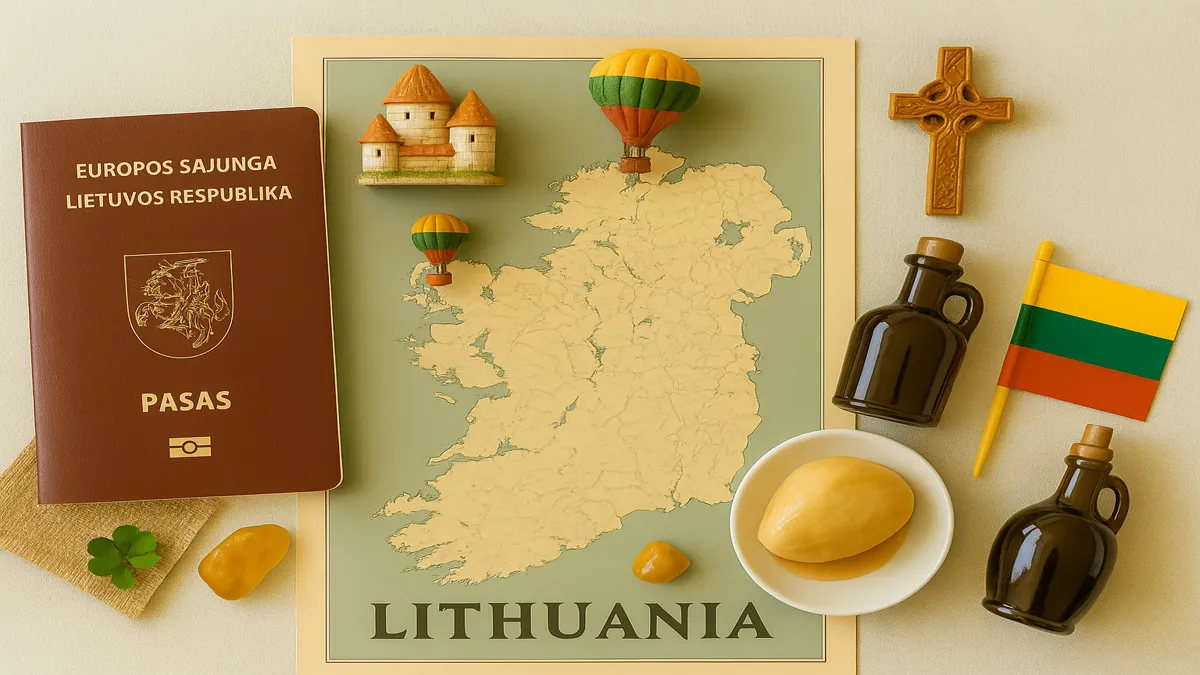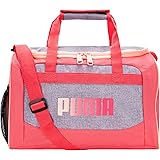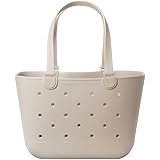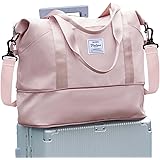Lithuania Travel Guide 2025: The Ultimate Handbook for First-Time Visitors
Planning your first trip to Lithuania in 2025? You’ve picked an incredible, often-overlooked gem! This ultimate guide is packed with everything you need to know to make your trip unforgettable. From exploring ancient castles to savoring hearty local dishes, we’ve got you covered.
Lithuania, the largest and southernmost of the Baltic States, offers a unique blend of ancient history, breathtaking nature, and vibrant modern culture. It’s a country that captivates every traveler, whether you’re wandering through UNESCO-listed Old Towns, hiking vast sand dunes, or simply enjoying the lively atmosphere of its charming cities.
Get ready to discover why Lithuania is quickly becoming one of Europe’s most beloved travel destinations. Let’s dive into the essential tips that will help you plan, budget, and experience the very best of this amazing country.
Table of Contents
- 1. Why Visit Lithuania in 2025?
- 2. Best Time to Visit Lithuania
- 3. Top Destinations in Lithuania for First-Timers
- 4. Planning Your Lithuania Trip: A Step-by-Step Guide
- 5. Accommodation in Lithuania: Where to Stay
- 6. Getting Around Lithuania: Transportation Guide
- 7. How Much Does a Trip to Lithuania Cost?
- 8. Must-Try Foods and Cultural Delights
- 9. Staying Safe in Lithuania
- 10. Solo Travel in Lithuania
- 11. Traveling Lithuania with Family or as a Senior
- 12. Digital Nomads in Lithuania
- 13. Essential Packing List in our Lithuania Travel Guide
- 14. FAQs for First-Timers
- 15. What’s Next? More Guides to Explore
1. Why Visit Lithuania in 2025?
Lithuania is quickly gaining recognition as a must-visit European destination, and 2025 is shaping up to be an exciting year to discover its charms. It’s a country that beautifully balances its rich, complex history with a forward-looking, innovative spirit.
A Rising Star in European Travel
The capital, Vilnius, was recently named one of Lonely Planet’s Best in Travel 2025, highlighting its burgeoning culinary scene, vibrant arts, and unique blend of Baroque and modernist architecture. This recognition alone is a huge draw!
Beyond the cities, Lithuania is a leader in ecotourism, offering pristine national parks, stunning coastlines, and a thriving wellness culture. You can immerse yourself in nature, enjoy outdoor activities, and even experience traditional Baltic healing practices.
Value and Accessibility
Compared to Western Europe, Lithuania offers fantastic value for money, making your travel budget stretch further. Plus, its compact size means you can explore a lot in a relatively short amount of time, making it perfect for a first-time European adventure.
ETIAS Update for 2025
Crucially for first-time visitors, the European Travel Information and Authorisation System (ETIAS), which would require pre-travel authorization for visa-exempt visitors, has been delayed. While the Entry/Exit System (EES) is expected to launch in October 2025, ETIAS is now projected to begin in late 2026. This means that for your 2025 trip, the current visa-exempt entry rules will remain in effect, simplifying your pre-trip preparations.
Looking for the best hotel or flight deals?
Plan your trip with ease using the Expedia search tool below. From charming boutique hotels to luxury resorts, this widget helps you compare top options in seconds — flights included!
2. Best Time to Visit Lithuania
Choosing the right time to visit Lithuania can significantly enhance your experience. Each season offers a distinct charm, from snowy landscapes to endless summer days.
Spring (April-May): Blooming Beauty
- Weather: Mild and fresh (8-18°C / 46-64°F). Expect a mix of sunshine and light showers.
- Crowds: Fewer crowds than summer, especially in April.
- Pros: Nature comes alive, flowers are in bloom, and attractions are less busy. Perfect for city breaks and enjoying the awakening landscapes.
- Cons: Weather can be unpredictable.
Summer (June-August): Vibrant & Lively
- Weather: Warmest months (18-28°C / 64-82°F), sometimes higher. Very long daylight hours, with the “White Nights” phenomenon in early summer.
- Crowds: Peak tourist season, meaning larger crowds at popular sites and higher prices for accommodation and flights.
- Pros: Best weather for outdoor activities, festivals, and enjoying the coast. Vibrant atmosphere in cities and towns.
- Cons: Can be crowded and more expensive. Mosquitoes can be present, especially near water.
Autumn (September-October): Golden Hues & Harvests
- Weather: Mild and crisp (10-20°C / 50-68°F) in early autumn, cooling down by October. Beautiful fall foliage.
- Crowds: Crowds begin to thin out, especially after September. Prices become more reasonable.
- Pros: Stunning autumnal colors, cozy atmosphere, and harvest festivals. Great for hiking and photography.
- Cons: Days get shorter, and rain becomes more frequent, especially in late autumn.
Winter (November-March): Cozy & Festive
- Weather: Cold (can drop below -10°C / 14°F). Expect snow, especially in January-February. Shorter daylight hours.
- Crowds: Fewest tourists (excluding Christmas and New Year). Lower prices for flights and accommodation.
- Pros: Magical Christmas markets, cozy cafes, and a chance to experience Lithuania’s quiet charm under a blanket of snow. Ideal for city breaks and winter sports.
- Cons: Cold, and many outdoor attractions might have reduced hours or be less enjoyable.
Embracing the Lithuanian Weather
No matter when you visit, be prepared for all types of weather. Packing layers and a good waterproof jacket is always a smart move. Don’t let a little rain or cold deter you; it’s part of the charm!
3. Top Destinations in Lithuania for First-Timers
Lithuania is brimming with incredible places to explore. For your first trip, focus on these iconic destinations that offer a true taste of the country’s diverse appeal.
Vilnius: The Baroque Capital
Lithuania’s capital is a UNESCO World Heritage site, famous for its stunning Baroque architecture, charming cobblestone streets, and vibrant arts scene. It’s a fantastic starting point for any trip.
Explore the majestic Vilnius Cathedral, wander through the artistic Republic of Užupis, and delve into history at the poignant Museum of Occupations and Freedom Fights (KGB Museum). Don’t forget to climb Gediminas’ Tower for panoramic city views.
Kaunas: The Cultural Hub
Lithuania’s second-largest city, Kaunas, offers a different vibe. It’s known for its interwar modernist architecture (a UNESCO site), vibrant street art, and a more laid-back atmosphere. It’s a great contrast to Vilnius.
Visit Kaunas Castle, explore the charming Old Town, and delve into history at the Museum of the Ninth Fort. For something truly unique, check out the quirky Devil’s Museum!
Trakai: Island Castle Fairytale
Just a short drive from Vilnius, Trakai is home to the breathtaking Trakai Island Castle, a medieval fortress set on an island in Lake Galvė. It looks straight out of a fairytale!
It’s a perfect day trip for history buffs and those seeking picturesque views. Enjoy a relaxing boat ride on the lake or try a traditional Karaim pastry called Kibinai.
Curonian Spit: Nature’s Masterpiece
A UNESCO World Heritage site, this stunning 98 km long sand spit separates the Curonian Lagoon from the Baltic Sea. It’s a truly unique landscape.
Explore vast sand dunes, serene pine forests, and charming fishing villages like Nida. Visit the whimsical Hill of Witches, an outdoor sculpture park. It’s a paradise for nature lovers and photographers.
Klaipėda: Coastal Gateway
Lithuania’s only port city, Klaipėda, offers a unique blend of German and Lithuanian heritage. Its Old Town features charming half-timbered houses and a maritime atmosphere.
It’s the main gateway to the Curonian Spit, with regular ferry connections. Enjoy the fresh sea air and explore the nearby beaches.
Hill of Crosses: A Symbol of Hope
Near Šiauliai, this powerful pilgrimage site is covered with tens of thousands of crosses, left by pilgrims for centuries. It’s a truly moving and unique testament to faith and resilience, especially during Soviet rule.
Consider combining Vilnius, Trakai, and a trip to the Curonian Spit for a well-rounded first Lithuanian experience. The country is compact, making travel between these spots relatively easy.
4. Planning Your Lithuania Trip: A Step-by-Step Guide
Effective planning is key to a stress-free Lithuanian adventure. Breaking it down into steps makes the process much more manageable. Start early, especially if you’re traveling during peak season.
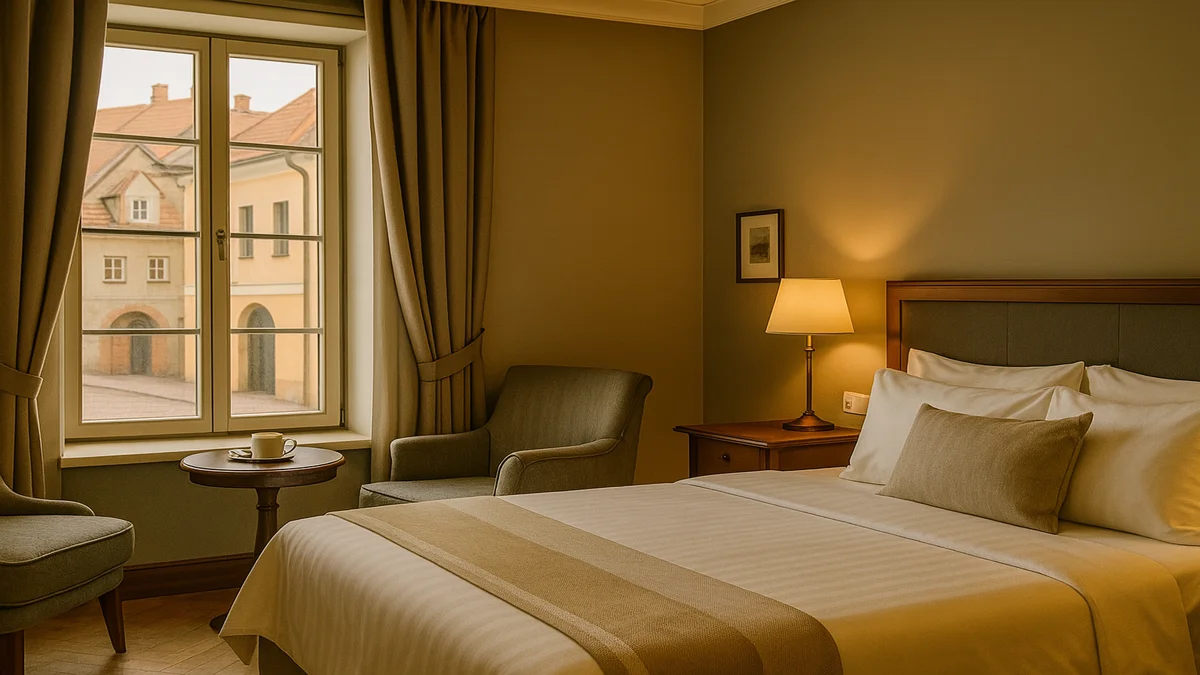
Setting Your Budget & Travel Style
Before anything else, decide on your budget. Lithuania can be explored on a shoestring or with luxurious flair. Your budget will influence your choices for accommodation, transport, and activities. Consider if you prefer a fast-paced adventure or a more relaxed, immersive experience.
Crafting Your Itinerary
Don’t try to see everything in one go. Lithuania, though compact, is packed with attractions. For a first trip, focus on 2-3 regions. A classic itinerary might include Vilnius, Trakai, and a visit to the Curonian Spit. Allow at least 2-3 full days per major city.
Understanding Visa & Entry Requirements (ETIAS Update)
Lithuania is part of the Schengen Area. For most nationalities (e.g., US, Canadian, Australian, EU citizens), a visa is not required for tourist stays up to 90 days. As mentioned, ETIAS is not expected to be in effect for 2025. Always check the official Lithuanian Immigration website for the latest requirements for your nationality. Ensure your passport is valid for at least six months beyond your intended departure date.
Booking Flights & Accommodation
Book your international flights 3-6 months in advance for the best prices, especially if traveling during peak season (June-August). Vilnius (VNO) is the main international airport. Accommodation should be secured around the same time, particularly in popular areas. Consider flexible cancellation policies.
Securing Travel Insurance
Never travel without comprehensive travel insurance. It protects you from unexpected events like trip cancellations, medical emergencies, lost luggage, and more. It’s a small investment for peace of mind.
Preparing Your Finances
Inform your bank of your travel plans. Lithuania uses the Euro (€). Consider a travel-friendly credit card with no foreign transaction fees. Have some local currency for small purchases, especially for smaller towns or markets.
Packing Smart
Create a packing list based on your itinerary and the season. Remember to pack light to make moving around easier, but always include layers and waterproofs for Lithuania’s changeable weather.
Staying Connected
Research eSIMs or local SIM cards for data access. This will help with navigation, communication, and staying in touch with loved ones.
5. Accommodation in Lithuania: Where to Stay
Lithuania offers a vast array of accommodation options to suit every budget and travel style. Whether you prefer a cozy hostel, a charming guesthouse, or a luxurious hotel, you’ll find the perfect place to rest after a day of exploration.
Hotels: From Boutique to Grand
You’ll find everything from chic boutique hotels in city centers to reliable international chains. Hotels offer convenience, amenities, and often excellent service. Prices vary widely based on location, star rating, and season.
Hostels: Social & Budget-Friendly
Lithuania has a thriving hostel scene, particularly in cities and popular tourist towns. They are ideal for solo travelers and those on a budget, offering dormitory beds and often private rooms. Hostels are great places to meet other travelers and often organize social events.
Guesthouses & B&Bs: Authentic Lithuanian Welcome
For a truly authentic experience, stay in a guesthouse or a traditional Bed & Breakfast. These often family-run establishments offer a warm welcome, personalized service, and a delicious breakfast. They provide a more intimate glimpse into local life and are found throughout the country.
Self-Catering & Vacation Rentals
Platforms like Airbnb are popular for longer stays, families, or groups. Self-catering options provide more space, a kitchen for preparing meals (saving money), and a chance to live like a local. This is particularly appealing for those planning to explore rural areas or the Curonian Spit.
Unique Stays: Cottages & Manors
For a memorable experience, consider staying in a traditional wooden cottage in a national park, or a beautifully restored manor house in the countryside. These unique accommodations offer a special touch to your Lithuanian adventure.
When choosing, prioritize location. Staying near public transport or within walking distance of attractions saves time and money. Read recent reviews carefully to ensure the accommodation meets your expectations.
6. Getting Around Lithuania: Transportation Guide
Navigating Lithuania is incredibly efficient, thanks to its well-developed transportation networks. You have many options for getting between cities and within them. Choose the mode that best fits your budget, time, and comfort level.
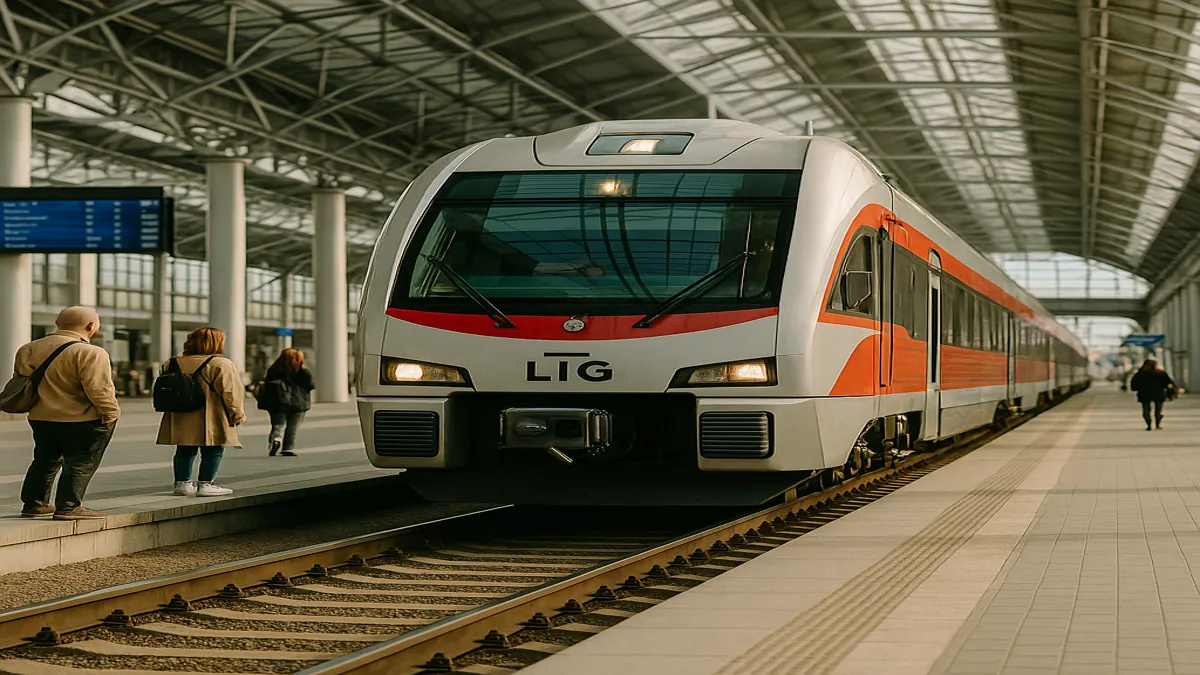
Trains: Scenic & Comfortable
- Pros: Lithuanian Railways (Lietuvos Geležinkeliai – LTG) connects major cities like Vilnius, Kaunas, and Klaipėda. Trains are comfortable, offer scenic views, and avoid traffic.
- Cons: Limited network outside major routes.
- Booking: Book tickets online at the LTG website or at train stations. Advance booking usually secures better prices.
Ready to book your train tickets hassle-free?
Search routes and compare prices on Trainline – your one-stop platform for rail travel across Europe.
Buses & Coaches: Affordable & Extensive
- Pros: The most extensive network, covering most towns and villages not served by rail. Generally more affordable than trains. Companies like Kautra and Ollex offer comfortable coaches with Wi-Fi.
- Cons: Slower than trains, can be affected by traffic.
- Booking: Tickets can be bought online or at bus stations.
Car Rental: The Ultimate Freedom
- Pros: Offers unparalleled flexibility to explore remote areas, charming villages, and scenic routes like the Curonian Spit at your own pace. Essential for reaching many natural attractions.
- Cons: Driving is on the right side of the road. Fuel is expensive. Parking in cities can be challenging and costly.
- Tips: An International Driving Permit (IDP) might be required if your license is not in English. Ensure your rental car has winter tires if traveling between November and April.
City Public Transport
- Vilnius & Kaunas: Both cities have extensive bus and trolleybus networks. Use a reloadable card (e.g., Vilniečio kortelė in Vilnius) for convenience and savings.
- Other Cities: Most cities have good local bus networks.
Walking & Biking
- Walking: Lithuania’s Old Towns are incredibly walkable. It’s often the best way to soak in the atmosphere and discover hidden gems.
- Biking: Popular in cities and national parks, especially in summer. Renting a bike is a fun and eco-friendly way to explore.
7. How Much Does a Trip to Lithuania Cost?
Lithuania is generally more affordable than Western European countries, offering excellent value for money. However, costs can vary depending on your travel style, chosen destinations, and length of stay. Here’s a breakdown to help you estimate.
Daily Cost Estimates (Per Person)
- Budget Traveler: €40-€70 / $45-75 USD per day
- Accommodation: Hostel dorms, budget guesthouses.
- Food: Supermarket picnics, street food, cooking some meals, pub lunches.
- Transport: Public transport, walking.
- Activities: Free museums, parks, walking tours.
- Mid-Range Traveler: €80-€150 / $85-165 USD per day
- Accommodation: Mid-range hotels, B&Bs, private hostel rooms.
- Food: Mix of casual restaurants, cafes, some pub dinners.
- Transport: Public transport, occasional taxis, some inter-city trains/buses.
- Activities: Paid attractions, some tours.
- Luxury Traveler: €160-€300+ / $175-330+ USD per day
- Accommodation: Luxury hotels, boutique hotels.
- Food: Fine dining, frequent restaurant meals.
- Transport: Taxis, private transfers, car rental.
- Activities: Exclusive tours, private guides, high-end experiences.
Cost Breakdown (General Estimates)
- Accommodation:
- Hostel Dorm: €15-€35 per night
- Budget Hotel/Guesthouse: €40-€80 per night
- Mid-Range Hotel: €80-€150 per night
- Luxury Hotel: €150+ per night
- Food:
- Supermarket/Picnic: €5-€15 per meal
- Casual Pub Meal/Cafe: €10-€25 per meal
- Mid-Range Restaurant: €25-€40 per meal
- Fine Dining: €50+ per meal
- Transportation (per day, average):
- Local Public Transport (cities): €1-€5 (e.g., Vilniečio kortelė in Vilnius)
- Intercity Trains/Buses: Varies greatly depending on distance and booking in advance. A long-distance ticket can range from €5-€25+.
- Activities & Sightseeing (per day, average):
- Budget (Free museums, walking tours, parks): €0-€10
- Mid-Range (Paid attractions, day tours): €10-€30
- High-End (Special experiences, theatre tickets): €30+
Money-Saving Tips:
- Free Attractions: Many of Lithuania’s best museums and galleries offer free entry to their permanent collections or on specific days. Explore parks and Old Towns on foot.
- Pub Lunches: Often offer great value for money compared to dinner. Look for ‘dienos pietūs’ (daily lunch specials).
- Local Transport Cards: Use city-specific cards (like Vilniečio kortelė) for the cheapest fares on public transport.
- Walk Everywhere: Lithuania’s cities are incredibly walkable. Save money and discover hidden gems by exploring on foot.
- Cook Your Own Meals: If staying in accommodation with kitchen facilities, buying groceries from supermarkets (Maxima, Iki, Lidl, Rimi) can significantly cut down food costs.
- Book Transport in Advance: ‘Advance’ tickets for trains and buses are often cheaper than buying on the day.
8. Must-Try Foods and Cultural Delights
Lithuanian cuisine is hearty, comforting, and deeply rooted in its history and agricultural traditions. Prepare your taste buds for delicious flavors, and immerse yourself in the country’s rich cultural heritage.
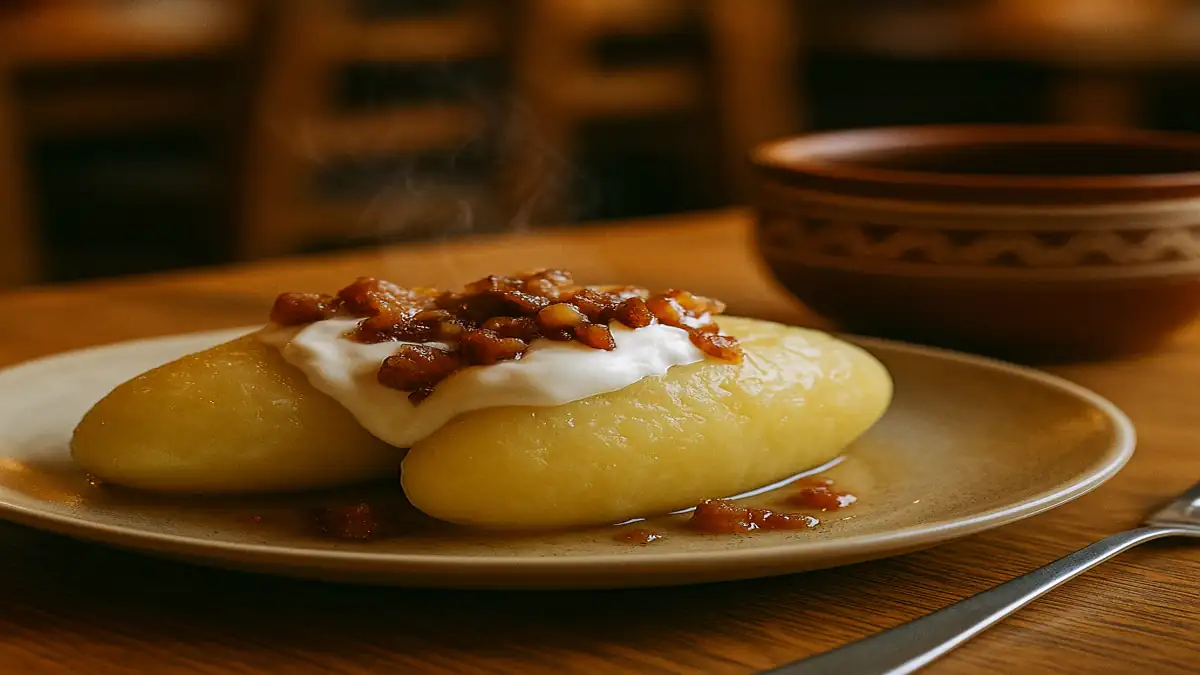
Iconic Lithuanian Dishes
- Cepelinai (Zeppelins): The national dish! Large, oval-shaped potato dumplings filled with minced meat or curd cheese, served with sour cream and bacon bits. A true Lithuanian experience!
- Šaltibarščiai (Cold Beetroot Soup): A vibrant pink, refreshing cold soup made from pickled beetroot, kefir, cucumbers, dill, and hard-boiled eggs. Perfect for summer days.
- Kibinai: Traditional pastries from the Karaim minority, found especially in Trakai. They’re savory, often filled with lamb and onion, or sweet with fruit.
- Bulviniai Blynai (Potato Pancakes): Crispy, pan-fried potato pancakes, often served with sour cream or mushroom sauce.
- Grybų sriuba (Mushroom Soup): A rich, creamy mushroom soup, often served in a bread bowl. A comforting dish, especially in cooler weather.
- Skilandis: A traditional smoked meat product, similar to a sausage, with a unique, intense flavor.
- Black Bread: Dark rye bread is a staple, often served with meals. It’s dense and flavorful.
Drinks & Cultural Tips
- Medus (Mead): A traditional alcoholic beverage made from fermented honey. Lithuania has a long history of mead production.
- Gira (Kvass): A non-alcoholic fermented beverage made from rye bread. Refreshing and slightly tangy.
- Lithuanian Beer: The country has a strong brewing tradition with many local craft breweries.
- The Pub Culture: While not as central as in Ireland, Lithuanian pubs offer a cozy atmosphere to try local beers and spirits.
- Traditional Music & Dance: Look for opportunities to experience traditional folk music and dance performances, especially during festivals or cultural events.
- Amber: Lithuania is famous for its amber. Visit amber galleries and museums, especially in Palanga or Vilnius, to learn about its history and significance.
- Markets: Explore local markets like Halės Market in Vilnius for fresh produce, local delicacies, and a glimpse into daily life.
- Language: Learning a few basic phrases in Lithuanian (e.g., “Labas” – hello, “Ačiū” – thank you, “Prašau” – please) goes a long way. Locals appreciate the effort.
Embrace the local flavors and traditions, and you’ll find Lithuania’s cultural heart is as warm as its hospitality.
9. Staying Safe in Lithuania
Lithuania is generally a very safe country for tourists, with low crime rates. However, like anywhere else, it’s essential to be aware of your surroundings and take common-sense precautions. Being prepared helps ensure a smooth and worry-free trip.
General Safety Tips
- Be Aware of Your Surroundings: Especially in crowded areas like train stations, popular attractions, and public transport.
- Protect Your Valuables: Use a cross-body bag or money belt. Avoid flashing expensive jewelry or electronics.
- Walk with Confidence: Look like you know where you’re going, even if you don’t.
- Avoid Isolated Areas at Night: Stick to well-lit, populated streets.
- Trust Your Gut: If a situation feels off, remove yourself from it.
Dealing with Pickpockets & Scams
Pickpocketing is the most common crime affecting tourists, particularly in busy areas of Vilnius Old Town, bus/train stations, and crowded public transport. Be extra vigilant in these spots.
- Keep Wallets in Front Pockets: Or use a money belt hidden under your clothes.
- Secure Bags: Keep zippers closed and bags in front of you, especially on crowded buses or trains.
- Be Wary of Distractions: Pickpockets often create diversions (e.g., asking for directions, dropping something) to distract you.
- Don’t Carry All Your Cash: Only carry what you need for the day. Leave extra cash and important documents in a hotel safe.
- Credit Card Fraud/ATM Scams: These are becoming more common. Check ATMs before use and don’t use machines that look unusual.
Emergency Numbers
- The universal emergency number in Lithuania (and throughout the EU) is 112 for police, ambulance, and fire services.
Health & Medical
- Prescription Medications: Carry them in their original containers with a copy of the prescription.
- Travel Insurance: Ensure your comprehensive travel insurance covers medical emergencies.
- European Health Insurance Card (EHIC): If you’re an EU citizen, this card provides access to state-provided healthcare.
By taking these simple precautions, you can enjoy your Lithuanian adventure with peace of mind.
10. Solo Travel in Lithuania
Lithuania is an incredibly rewarding destination for solo travelers, offering freedom, flexibility, and endless opportunities for self-discovery. Its excellent safety record, efficient public transport, and welcoming atmosphere make it ideal for exploring independently.
Why Lithuania is Great for Solo Travelers
- Safety First: Lithuania is one of the safest countries in Europe, making it a comfortable choice for solo explorers, including solo female travelers.
- Ease of Navigation: Cities are walkable, and public transport is efficient. English is widely spoken in tourist areas.
- Affordability: Compared to Western Europe, Lithuania offers great value, making solo travel more accessible without breaking the bank.
- Cultural Immersion: Solo travel often encourages more interaction with locals and other travelers, leading to deeper cultural experiences.
Tips for Solo Travelers
- Accommodation Choices: Stay in hostels with good common areas and social events if you want to meet people. Many offer private rooms too. Well-reviewed hotels or guesthouses in safe neighborhoods are also excellent options.
- Join Walking Tours: A fantastic way to get acquainted with a city and meet fellow travelers. Many cities offer free walking tours.
- Embrace Local Life: Don’t be afraid to dine alone in cafes or restaurants. Engage in conversation at a local pub – Lithuanians are generally friendly once you break the ice.
- Prioritize Safety: Always share your itinerary with someone back home. Be extra vigilant with your belongings in crowded areas.
- Stay Connected: Have a reliable way to access maps and communicate (e.g., eSIM or local SIM card).
- Be Flexible: The beauty of solo travel is the freedom to change your plans on a whim. Embrace spontaneity!
Solo travel in Lithuania can be an incredibly empowering and enriching experience. Embrace the journey and enjoy the freedom it offers.
11. Traveling Lithuania with Family or as a Senior
Lithuania is wonderfully accommodating for travelers of all ages, offering a wealth of experiences for families and seniors alike. With a little planning, everyone can enjoy a comfortable and memorable trip.
Traveling with Family
- Kid-Friendly Attractions: Lithuania offers numerous castles (Trakai!), interactive museums (like the Museum of Illusions in Vilnius), and beautiful parks. The Curonian Spit is a fantastic natural playground with its vast dunes and beaches.
- Pace Yourselves: Don’t overschedule. Kids (and adults!) need downtime. Build in breaks for playgrounds, snacks, and spontaneous exploration.
- Accommodation: Apartments or hotels with family rooms/suites often provide more space and convenience. Consider places with kitchenettes to prepare some meals, which can also save money.
- Transportation: Trains and buses are generally excellent for families. For younger children, factor in stroller accessibility on public transport (Vilnius and Kaunas are generally good).
- Packing: Bring familiar snacks, comfort items, and any necessary medications. Layers and waterproof gear are crucial for kids.
Traveling as a Senior
- Accessibility: Major cities and attractions are generally accessible, but be aware that historic sites (like cobblestone streets in Old Towns) and rural areas can have uneven terrain and stairs. Research accessibility in advance if mobility is a concern.
- Pace & Breaks: Build in plenty of rest days and shorter sightseeing days. Lithuania’s relaxed pace is perfect for this. Don’t try to cram too much into one day.
- Discounts: Many attractions and public transport systems might offer senior discounts. Always ask if you qualify!
- Travel Insurance: Ensure comprehensive travel insurance that covers pre-existing conditions.
- Comfort: Prioritize comfortable shoes and easy-to-access accommodation. Consider guided tours for convenience and expert insights, especially for longer distances or complex itineraries.
- Medication: Carry all necessary medications in your carry-on, with copies of prescriptions.
Lithuania’s diverse offerings mean there’s an ideal trip for every family dynamic and senior traveler. Focus on what brings joy and comfort to your group.
12. Digital Nomads in Lithuania
Lithuania is an increasingly attractive destination for digital nomads, offering a fantastic blend of rich history, modern infrastructure, and a relatively low cost of living compared to Western Europe. Its welcoming atmosphere and growing tech scene are big draws.
Why Lithuania for Digital Nomads?
- Connectivity: Reliable high-speed internet is widely available, especially in urban areas. Lithuania consistently ranks high globally for internet speed.
- Cost of Living: Significantly more affordable than major Western European cities, allowing your budget to stretch further.
- Quality of Life: High quality of life, safe environment, and a good work-life balance.
- Culture & Lifestyle: Enjoy vibrant city life, beautiful nature, and a rich cultural scene.
- Co-working Spaces: A growing number of modern co-working spaces in Vilnius and Kaunas, offering dedicated workspaces and networking opportunities.
- English Proficiency: High English proficiency, especially among younger generations and in the tech sector, making communication easy.
Visa Considerations
Lithuania does not currently have a specific Digital Nomad Visa. Non-EU citizens typically need to enter on a tourist visa (if applicable) and cannot work for a Lithuanian company. For longer stays, options like the EU Blue Card or other work permits might be considered if you find local employment. Always check the official Lithuanian Immigration website for the latest requirements based on your nationality and intended stay.
Popular Digital Nomad Hubs
- Vilnius: The capital is the main hub, with the most co-working spaces, a diverse expat community, and endless cultural activities. It’s a dynamic city with a strong startup ecosystem.
- Kaunas: More affordable than Vilnius, with a growing tech scene, a vibrant, artistic atmosphere, and a strong sense of community.
- Klaipėda: Offers a coastal lifestyle, though with fewer dedicated nomad facilities. Ideal for those seeking a quieter, seaside environment.
Tips for Digital Nomads
- Research Visas: Thoroughly understand the visa requirements for your nationality and intended length of stay.
- Reliable Internet: Always confirm internet speeds and reliability before booking accommodation, especially if you rely heavily on video calls.
- Community: Join local digital nomad groups or online forums to connect with others.
13. Essential Packing List in our Lithuania Travel Guide
Packing smart is crucial for a comfortable and efficient trip to Lithuania. Given its varied climate, layers are your best friend. Here’s an essential packing list to get you started.
Clothing Essentials
- Layers: Pack versatile layers (t-shirts, long-sleeved tops, sweaters/fleeces, light jacket). This is key for adapting to changing weather.
- Waterproof Jacket: Non-negotiable! Even in summer, rain showers are common. Look for something breathable.
- Comfortable Walking Shoes: You’ll be doing a lot of walking on cobblestone streets and potentially uneven terrain. Bring at least two comfortable pairs. Waterproof shoes are a bonus.
- Warm Socks: Wool or synthetic socks are great for keeping feet dry and warm, especially in cooler months.
- Versatile Outfits: Choose items that can be mixed and matched to create different looks.
- Dressier Outfit (Optional): One nice outfit for evenings out or special occasions.
- Winter Specifics (if applicable): Thermal underwear, warm hat, gloves/mittens, scarf, and an insulated, waterproof winter coat.
Documents & Money
- Passport/Visa: Ensure validity for at least 6 months beyond your return date.
- Travel Insurance Details: Keep a copy easily accessible.
- Credit/Debit Cards: Inform your bank of your travel plans.
- Some Local Currency (Euros): For immediate needs upon arrival and small purchases.
- Copies of Important Documents: Digital and physical copies stored separately.
Health & Toiletries
- Personal Medications: With prescriptions if needed.
- Basic First-Aid Kit: Band-aids, pain relievers, antiseptic wipes.
- Travel-Sized Toiletries: Or plan to buy them there.
- Hand Sanitizer: Always useful.
Electronics
- Universal Travel Adapter: Lithuania uses Type C/F plugs.
- Portable Power Bank: For charging devices on the go.
- Phone & Charger: With an unlocked phone for local SIM/eSIM.
- Headphones: For flights and public transport.
Miscellaneous
- Reusable Water Bottle: Stay hydrated and reduce plastic waste. Tap water is safe to drink.
- Daypack/Small Backpack: For daily excursions.
- Eye Mask & Earplugs: For flights and noisy accommodations.
- Small Lock: For hostel lockers or luggage.
- Reusable Shopping Bag: For groceries or souvenirs.
Pro-Tip: Roll your clothes to save space and minimize wrinkles. Consider packing cubes for organization. Check airline baggage restrictions before you fly.
As an Amazon Associate, we earn from qualifying purchases.
14. FAQs for First-Timers
Here are some frequently asked questions that first-time travelers to Lithuania often have.
Q: Is English widely spoken in Lithuania?
A: Yes, English is widely spoken, especially in major tourist areas, hotels, and among younger generations. While learning a few basic Lithuanian phrases is appreciated, you’ll generally find it easy to communicate in English.
Q: Do I need a visa for Lithuania in 2025?
A: For most citizens from countries like the US, Canada, and Australia, no visa is required for short tourist stays (up to 90 days within a 180-day period) in the Schengen Area in 2025. The ETIAS system is now projected to begin in late 2026, so it won’t be needed for 2025 trips. Always check your specific nationality’s requirements.
Q: What’s the best way to pay for things?
A: Credit and debit cards are widely accepted, especially Visa and Mastercard. It’s wise to have some Euros for smaller purchases, local markets, or places that might not accept cards. Inform your bank of your travel plans to avoid card blocks.
Q: Is tap water safe to drink?
A: Yes, tap water in Lithuania is generally safe and of high quality. You can confidently refill your reusable water bottle.
Q: How do I deal with jet lag?
A: Try to adjust to the local time zone as quickly as possible. Stay hydrated, avoid excessive caffeine/alcohol, and get some sunlight upon arrival. Try to sleep on the plane if possible.
Q: Should I buy a SIM card or use an eSIM?
A: Both are good options. An eSIM offers convenience as you can activate it before you arrive. A local physical SIM card can sometimes be cheaper for longer stays. Ensure your phone is unlocked.
Q: Is tipping customary in Lithuania?
A: Tipping is not as ingrained as in some Western countries, but it is appreciated for good service. Rounding up the bill or leaving 5-10% in restaurants is common. For taxis, rounding up is fine.
Q: What’s the best way to stay safe from pickpockets?
A: Be vigilant in crowded areas. Use a cross-body bag worn in front of you, a money belt, or secure inner pockets. Avoid displaying large amounts of cash or expensive jewelry.
15. What’s Next? More Guides to Explore
Congratulations on taking the first step towards an incredible Lithuanian adventure! This guide has provided you with essential tips and insights to plan your unforgettable first trip in 2025. But the journey doesn’t end here.
Lithuania is a country of endless discoveries, and there’s always more to explore.
Related Articles to Inspire Your Next Adventure:
🇪🇺 Western Europe
🇪🇺 Southern Europe
🇪🇺 Northern Europe
🇪🇺 Central Europe
🇪🇺 Eastern Europe & Baltics
🌍 Continental Overview
References:
European Union. (2025, April 14). Revised timeline for the EES and ETIAS. Retrieved from Official EU Site
